Assisted hatching on assisted conception (in vitro fertilisation (IVF) and intracytoplasmic sperm injection (ICSI))
- PMID: 33730422
- PMCID: PMC8094760
- DOI: 10.1002/14651858.CD001894.pub6
Assisted hatching on assisted conception (in vitro fertilisation (IVF) and intracytoplasmic sperm injection (ICSI))
Abstract
Background: Failure of implantation and conception may result from inability of the blastocyst to escape from its outer coat, which is known as the zona pellucida. Artificial disruption of this coat is known as assisted hatching and has been proposed as a method for improving the success of assisted conception by facilitating embryo implantation.
Objectives: To determine effects of assisted hatching (AH) of embryos derived from assisted conception on live birth and multiple pregnancy rates. SEARCH METHODS: We searched the Cochrane Gynaecology and Fertility Group Specialised Register (until May 2020), the Cochrane Central Register of Controlled Trials (CENTRAL; until May 2020), in the Cochrane Library; MEDLINE (1966 to May 2020); and Embase (1980 to May 2020). We also searched trial registers for ongoing and registered trials (http://www.clinicaltrials.gov - a service of the US National Institutes of Health; http://www.who.int/trialsearch/Default.aspx - The World Health Organization International Trials Registry Platform search portal) (May 2020).
Selection criteria: Two review authors identified and independently screened trials. We included randomised controlled trials (RCTs) of AH (mechanical, chemical, or laser disruption of the zona pellucida before embryo replacement) versus no AH that reported live birth or clinical pregnancy data.
Data collection and analysis: We used standard methodological procedures recommended by Cochrane. Two review authors independently performed quality assessments and data extraction.
Main results: We included 39 RCTs (7249 women). All reported clinical pregnancy data, including 2486 clinical pregnancies. Only 14 studies reported live birth data, with 834 live birth events. The quality of evidence ranged from very low to low. The main limitations were serious risk of bias associated with poor reporting of study methods, inconsistency, imprecision, and publication bias. Five trials are currently ongoing. We are uncertain whether assisted hatching improved live birth rates compared to no assisted hatching (odds ratio (OR) 1.09, 95% confidence interval (CI) 0.92 to 1.29; 14 RCTs, N = 2849; I² = 20%; low-quality evidence). This analysis suggests that if the live birth rate in women not using assisted hatching is about 28%, the rate in those using assisted hatching will be between 27% and 34%. Analysis of multiple pregnancy rates per woman showed that in women who were randomised to AH compared with women randomised to no AH, there may have been a slight increase in multiple pregnancy rates (OR 1.38, 95% CI 1.13 to 1.68; 18 RCTs, N = 4308; I² = 48%; low-quality evidence). This suggests that if the multiple pregnancy rate in women not using assisted hatching is about 9%, the rate in those using assisted hatching will be between 10% and 14%. When all of the included studies (39) are pooled, the clinical pregnancy rate in women who underwent AH may improve slightly in comparison to no AH (OR 1.20, 95% CI 1.09 to 1.33; 39 RCTs, N = 7249; I² = 55%; low-quality evidence). However, when a random-effects model is used due to high heterogeneity, there may be little to no difference in clinical pregnancy rate (P = 0.04). All 14 RCTs that reported live birth rates also reported clinical pregnancy rates, and analysis of these studies illustrates that AH may make little to no difference in clinical pregnancy rates when compared to no AH (OR 1.07, 95% CI 0.92 to 1.25; 14 RCTs, N = 2848; I² = 45%). We are uncertain about whether AH affects miscarriage rates due to the quality of the evidence (OR 1.13, 95% CI 0.82 to 1.56; 17 RCTs, N = 2810; I² = 0%; very low-quality evidence).
Authors' conclusions: This update suggests that we are uncertain of the effects of assisted hatching (AH) on live birth rates. AH may lead to increased risk of multiple pregnancy. The risks of complications associated with multiple pregnancy may be increased without evidence to demonstrate an increase in live birth rate, warranting careful consideration of the routine use of AH for couples undergoing in vitro fertilisation (IVF) or intracytoplasmic sperm injection (ICSI). AH may offer a slightly increased chance of achieving a clinical pregnancy, but data quality was of low grade. We are uncertain about whether AH influences miscarriage rates.
Trial registration: ClinicalTrials.gov NCT02752568.
Copyright © 2021 The Cochrane Collaboration. Published by John Wiley & Sons, Ltd.
Conflict of interest statement
MAA, SF, SH and LL have no interests to declare. MS has received travel and accommodation support for conferences unrelated to the topic of this review.
Figures
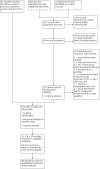
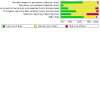
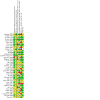
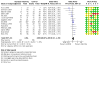
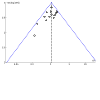
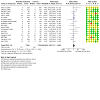
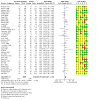
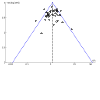
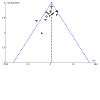
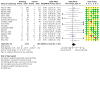
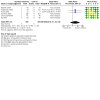

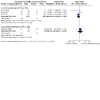
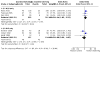
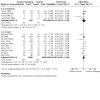
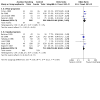
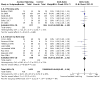
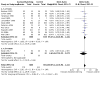
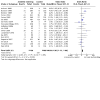

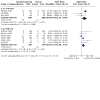
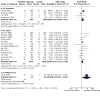
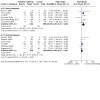
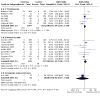
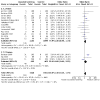
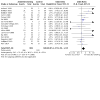
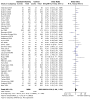
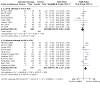
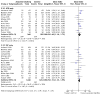
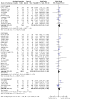
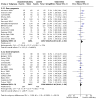
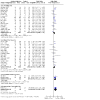
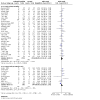
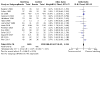
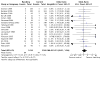
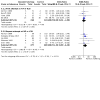
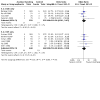
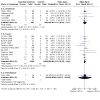

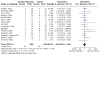
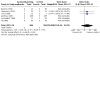
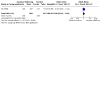
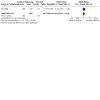
Update of
- doi: 10.1002/14651858.CD001894.pub5
Similar articles
-
Assisted hatching on assisted conception (in vitro fertilisation (IVF) and intracytoplasmic sperm injection (ICSI).Cochrane Database Syst Rev. 2012 Dec 12;12(12):CD001894. doi: 10.1002/14651858.CD001894.pub5. Cochrane Database Syst Rev. 2012. PMID: 23235584 Free PMC article.
-
Assisted hatching on assisted conception (IVF & ICSI).Cochrane Database Syst Rev. 2006 Jan 25;(1):CD001894. doi: 10.1002/14651858.CD001894.pub3. Cochrane Database Syst Rev. 2006. Update in: Cochrane Database Syst Rev. 2009 Apr 15;(2):CD001894. doi: 10.1002/14651858.CD001894.pub4. PMID: 16437437 Updated.
-
Assisted hatching on assisted conception (IVF & ICSI).Cochrane Database Syst Rev. 2005 Oct 19;(4):CD001894. doi: 10.1002/14651858.CD001894.pub2. Cochrane Database Syst Rev. 2005. Update in: Cochrane Database Syst Rev. 2006 Jan 25;(1):CD001894. doi: 10.1002/14651858.CD001894.pub3. PMID: 16235287 Updated.
-
Assisted hatching on assisted conception (IVF and ICSI).Cochrane Database Syst Rev. 2009 Apr 15;(2):CD001894. doi: 10.1002/14651858.CD001894.pub4. Cochrane Database Syst Rev. 2009. Update in: Cochrane Database Syst Rev. 2012 Dec 12;12:CD001894. doi: 10.1002/14651858.CD001894.pub5. PMID: 19370570 Updated.
-
Preimplantation genetic testing for aneuploidies (abnormal number of chromosomes) in in vitro fertilisation.Cochrane Database Syst Rev. 2020 Sep 8;9(9):CD005291. doi: 10.1002/14651858.CD005291.pub3. Cochrane Database Syst Rev. 2020. PMID: 32898291 Free PMC article.
Cited by
-
Placental histology following assisted hatching in fresh transfer cycles.Arch Gynecol Obstet. 2022 Oct;306(4):1267-1272. doi: 10.1007/s00404-022-06648-4. Epub 2022 Jun 23. Arch Gynecol Obstet. 2022. PMID: 35737125
-
Laser-assisted hatching is associated with reduced re-expansion of vitrified-thawed blastocysts and has no significant effect on embryo implantation.J Ovarian Res. 2025 Jun 21;18(1):136. doi: 10.1186/s13048-025-01723-1. J Ovarian Res. 2025. PMID: 40544282 Free PMC article.
-
Delphi consensus on add-ons and social midia in Assisted Reproductive Technology.JBRA Assist Reprod. 2023 Oct 18;27(4):727-38. doi: 10.5935/1518-0557.20230047. Online ahead of print. JBRA Assist Reprod. 2023. PMID: 37850861 Free PMC article.
-
Unlocking the Potential of Assisted Hatching in Assisted Reproductive Technology: A Narrative Review.Cureus. 2024 May 21;16(5):e60736. doi: 10.7759/cureus.60736. eCollection 2024 May. Cureus. 2024. PMID: 38903279 Free PMC article. Review.
-
Laser-assisted hatching improves pregnancy outcomes in frozen-thawed embryo transfer cycles of cleavage-stage embryos: a large retrospective cohort study with propensity score matching.J Assist Reprod Genet. 2023 Feb;40(2):417-427. doi: 10.1007/s10815-022-02711-w. Epub 2023 Jan 7. J Assist Reprod Genet. 2023. PMID: 36609944 Free PMC article.
References
References to studies included in this review
Abulsoud 2019 {published data only}
-
- Abulsoud M, El-Ghareeb A, Abdel Rahman H, Al Ahwany A, Ebrahim L, Wael Ragab M. The effect of quarter laser assisted hatching of human embryos on pregnancy rates after intracytoplasmic sperm injection. International Journal of Pharmaceutical Sciences Review and Research May/June 2019;56(1):112-6.
Antinori 1999 {published data only}
-
- Antinori S, Versaci C, Dani L, Barbaro E, Antinori M, Cerusico C, et al. Laser assisted hatching at the extremes of the IVF spectrum: first cycle and after 6 cycles. A randomized prospective trial [abstract]. Fertility and Sterility 1999;72(3 Suppl 1):S111.
Balaban 2006 {published data only}
-
- Balaban B, Urman B, Yakin K, Isiklar A. Laser assisted hatching increases pregnancy and implantation rates in cryopreserved embryos that were allowed to cleave in-vitro after thawing: a prospective randomised study. Human Reproduction 2006;21(8):2136-40. - PubMed
Balakier 2009 {published data only}
-
- Balakier H, Mandel R, Sojecki A, Motamedi G, Zaver S, Librach C. Laser zona thinning in women aged < or = 37 years: a randomized study. Fertility and Sterility 2009;91(4 Suppl):1479-82. [PMID: ] - PubMed
Baruffi 2000 {published data only}
Carter 2003 {published and unpublished data}
-
- Carter J, Graham J, Han T, Davis A, Richter K, Widra E. Preliminary results of a prospective randomized study to assess the value of laser assisted hatching before cleavage stage embryo transfer among good-prognosis in vitro fertilization (IVF) patients. Fertility and Sterility 2003;80 Suppl 3:S94.
Ciray 2005 {published data only}
-
- Ciray HN, Bener F, Karagenc L, Ulug U, Bahceci M. Impact of assisted hatching on ART outcome in women with endometriosis. Human Reproduction 2005;20(9):2546-9. - PubMed
Cohen 1992 {published data only}
-
- Cohen J, Alikani M, Trowbridge J, Rosenwaks Z. Implantation enhancement by selective assisted hatching using zona drilling of human embryos with poor prognosis. Human Reproduction 1992;7(5):685-91. - PubMed
-
- Liu H-C, Alikani M, Cohen J, Rosenwaks Z. Assisted hatching facilitates earlier implantation after IVF-ET. In: Fertility and Sterility Abstracts. Vol. 58. 1992:61 (O-136). - PubMed
-
- Liu H-C, Cohen J, Alikani M, Noyes N, Rosenwaks Z. Assisted hatching facilitates earlier implantation. Fertility and Sterility 1993;60(5):871-5. - PubMed
Elhelw 2005 {published data only}
-
- Elhelw B, El Sadek MM, Al Nomrosy KM. Laser assisted hatching may enhance implantation and pregnancy rates on cryopreserved-thawed embryos in patients with repeated implantation failures. A prospective randomised study. In: ESHRE Copenhagen - poster abstract. 2005.
Elnahas 2017 {published data only}
-
- Elnahas T, Tawab N, Azmy O, Elnoury A, El-Faissal Y, Fouad T, et al. Prospective randomized trial on the use of laser assisted hatching for transfer of frozen/thawed embryos in human intracytoplasmic sperm injection. Middle East Fertility Society Journal 2017;22(4):309–12.
Fang 2010 {published data only}
-
- Fang C, Li T, Miao BY, Zhuang GL, Zhou C. Mechanically expanding the zona pellucida of human frozen thawed embryos: a new method of assisted hatching. Fertility and Sterility 2010;94(4):1302-7. [PMID: ] - PubMed
Ge 2008 {published data only}
-
- Ge HS, Zhou W, Zhang W, Lin JJ. Impact of assisted hatching on fresh and frozen-thawed embryo transfer cycles: a prospective, randomized study. Reproductive Biomedicine Online 2008;16(4):589-96. [PMID: ] - PubMed
Germond 2004 {published data only}
-
- Primi M-P, Senn A, Montag M, Van der Ven H, Mandelbaum J, Veiga A, et al. A European multicentre prospective randomized study to assess the use of assisted hatching with a diode laser and the benefit of immunosuppressive/antibiotic treatment in different patient populations. Human Reproduction 2004;19(10):2325-33. - PubMed
González‐Ortega 2015 {published data only}
-
- González-Ortega C, Cancino-Villarreall P, Anaya-Torres FJ, Pérez-Peña E, Gutiérrez-Gutiérrez AM. Impact of laser-assisted hatching (quarter technique) in poor prognosis patients. Ginecologia y Obstetricia de Mexico 2015;83(11):670-9. - PubMed
Hagemann 2010 {published data only}
-
- Desai SG, Cooper AR, Hagemann AR, Odem RR, Ratts VS, Jungheim ES. Assisted hatching may benefit young women with a poor ovarian response. Fertility & Sterility 2013;100(3 Suppl):S506.
-
- Hagemann AR, Lanzendorf SE, Jungheim ES, Chang AS, Ratts VS, Odem RR. A prospective, randomized, double-blinded study of assisted hatching in women younger than 38 years undergoing in vitro fertilization. Fertility & Sterility 2010;93(2):586-91. [PMID: ] - PubMed
Hellebaut 1996 {published and unpublished data}
-
- Hellebaut S, De Sutter P, Dozortsev D, Onghena A, Qian C, Dhont M. Does assisted hatching improve implantation rates after in vitro fertilization or intracytoplasmic sperm injection in all patients? A prospective randomized study. Journal of Assisted Reproduction and Genetics 1996;13(1):19-22. - PubMed
Hurst 1998 {published and unpublished data}
Isik 2000 {published data only}
Isiklar 1999 {published data only}
-
- Isiklar A, Balaban B, Aksoy S, Alatas C, Mercan R, Nuhoglu A, et al. The effect of mechanical assisted hatching on progression of cleavage stage embryos to the blastocyst stage [abstract]. Fertility & Sterility 1999;72(3 Suppl 1):S162.
Jelinkova 2002 {published data only}
-
- Jelinkova L, Pavelkova J, Reeka N, Paulus W, Zivny J, Sterzik K. Chemical removal of the zona pellucida improves implantation. Human Reproduction 2002;17:131. - PubMed
-
- Jelinkova L, Pavelkova J, Strehler E, Paulus W, Zivny J, Sterzik K. Improved implantation rate after chemical removal of the zona pellucida. Fertility & Sterility 2003;79 Suppl 6:1299-303. - PubMed
Kutlu 2010 {published data only}
Laffoon 1999 {published data only}
-
- Laffoon IS, Sokoloski JE, Volk EA, Hughes L, Krivinko DM, Sanfilippo JS, et al. The effect of assisted hatching on the outcome of assisted reproductive technology cycles in women under 39 years of age [abstract]. Fertility & Sterility 1999;72(3 Suppl 1):S243.
Lanzendorf 1998 {published and unpublished data}
-
- Lanzendorf SE, Nehchiri F, Mayer JF, Oehninger S, Muasher SJ. A prospective, randomized, double-blind study for the evaluation of assisted hatching in patients with advanced maternal age. Human Reproduction 1998;13(2):409-13. - PubMed
Nada 2018 {published data only}
-
- Nada M, El‐Noury A, Al‐Inany H, Bibars M, Taha T, Salama S, et al. Effect of laser‐assisted zona thinning, during assisted reproduction, on pregnancy outcome in women with endometriosis: randomized controlled trial. Archives of Gynecology and Obstetrics 2018;297(2):521–8. - PubMed
Nagy 1999 {published data only}
-
- Nagy ZP, Rienzi L, Iacobelli M, Morgia F, Ubaldi F, Schimberni M, et al. Laser-assisted hatching and removal of degenerated blastomere(s) of frozen-thawed embryos improves pregnancy rate [abstract]. Fertility & Sterility 1999;72(3 Suppl 1):S4.
Ng 2005 {published data only}
-
- Ng EHY, Naveed F, Lau EYL, Yeung WSB, Chan CCWC, Tang OS, et al. A randomized double-blind controlled study of the efficacy of laser-assisted hatching on implantation and pregnancy rates of frozen-thawed embryo transfer at the cleavage stage. Human Reproduction 2005;20:979-85. - PubMed
Petersen 2005 {published data only}
-
- Petersen CG, Mauri AL, Baruffi RL, Oliveira JBA, Massaro FC, Elder K, et al. Implantation failures: success of assisted hatching with quarter-laser zona thinning. Reproductive Biomedicine Online 2005;10 Suppl 2:224-9. - PubMed
Razi 2013 {published data only}
Rufas‐Sapir 2004 {published data only}
-
- Rufas-Sapir O, Stein A, Orvieto R, Avrech OM, Kotler N, Pinkas H, et al. Is assisted hatching beneficial in patients with recurrent implantation failures. Clinical & Experimental Obstetrics & Gynecology 2004;31 Suppl 2:110-2. - PubMed
Ryan 1997 {published data only}
-
- Ryan JP, Pike IL, Catt JW, Porter RN, Saunders DM. Failure of assisted hatching to increase pregnancy rates following the transfer of fresh or frozen-thawed day 2 human embryos. In: Human Reproduction Abstracts of 13th Annual Meeting of the ESHRE. 1997:188.
Safari 2017 {published data only}
-
- Safari S, Khalili M, Barekati Z, Halvaei I, Anvari M, Nottola S. Cosmetic micromanipulation of vitrified-warmed cleavage stage embryos does not improve ART outcomes: an ultrastructural study of fragments. Reproductive Biology 2017;17:210–7. - PubMed
Sagoskin 2007 {published data only}
-
- Sagoskin AW, Levy MJ, Tucker MJ, Richter KS, Widra EA. Laser assisted hatching in good prognosis patients undergoing in vitro fertilisation embryo transfer: a randomised controlled trial. Fertility & Sterility 2007;87(2):283-7. - PubMed
Shi 2016 {published data only}
-
- Shi W, Hongwei T, Zhang W, Li N, Li M, Li W, et al. A prospective randomized controlled study of laser-assisted hatching on the outcome of first fresh IVF-ET cycle in advanced age women. Reproductive Sciences 2016;23(10):1397-401. - PubMed
Stein 1995 {published data only}
-
- Stein A, Rufas O, Amit S, Avrech O, Pinkas H, Ovadia J, et al. Assisted hatching by partial zona dissection of human pre-embryos in patients with recurrent implantation failure after in vitro fertilization. Fertility & Sterility 1995;63(4):838-41. - PubMed
Tucker 1993 {published data only}
-
- Tucker MJ, Luecke NM, Wiker SR, Wright G. Chemical removal of the outside of the zona pellucida of day 3 human embryos has no impact on implantation rate. Journal of Assisted Reproduction and Genetics 1993;10(3):187-91. - PubMed
Tucker 1996 {published data only}
-
- Tucker MJ, Morton PC, Wright G, Ingargiola PE, Sweitzer CL, Elsner CW, et al. Enhancement of outcome from intracytoplasmic sperm injection: does co-culture or assisted hatching improve implantation rates? Human Reproduction 1996;11(11):2434-7. - PubMed
Utsunomiya 1998 {published data only}
-
- Utsunomiya T, Sato M, Hirotsuru K. Assisted hatching by zona thinning to multiple-failure in vitro fertilization patients [abstract]. Fertility & Sterility 1998;70(3 Suppl 1):S328.
Valojerdi 2010 {published data only}
-
- Valojerdi MR, Eftekhari-Yazdi P, Karimian L, Hassani F, Movaghar B. Effect of laser zona thinning on vitrified-warmed embryo transfer at the cleavage stage: a prospective, randomized study. Reproductive Biomedicine Online 2010;20(2):234-42. [PMID: ] - PubMed
Wan 2014 {published data only}
-
- Wan C-Y, Song C, Diao L-H, Li G-G, Bao Z-J, Hu X-D, et al. Laser-assisted hatching improves clinical outcomes of vitrified-warmed blastocysts developed from low-grade cleavage-stage embryos: a prospective randomized study. Reproductive Biomedicine Online 2014;28(5):582-9. - PubMed
References to studies excluded from this review
Abdelmassih 2002 {published data only}
-
- Abdelmassih S, Cardoso J, Abdelmassih V, Dias JA, Abdelmassih R, Nagy ZP. Laser-assisted ICSI: a novel approach to obtain higher oocyte survival and embryo quality rates. Human Reproduction 2002;17 Suppl 10:2694-7. - PubMed
Amorocho 2012 {published data only}
-
- Amorocho B, Calderon G, Gumbao D, Sanchez A, Molla M, Landeras JTI. The effect of the thickness of the zona pellucida using LAH (laser assisted hatching) or not in IVF/ICSI cycles for two age groups. Fertility & Sterility 2012;98 Suppl 1(3):S257. [Conference abstract]
Antinori 1996a {published data only}
-
- Antinori S, Selman HA, Caffa B, Panci C, Dani G, Versaci C. Zona opening of human embryos using a non-contact UV laser for assisted hatching in patients with poor prognosis of pregnancy. Human Reproduction 1996;11:2488-92. - PubMed
Antinori 1996b {published data only}
-
- Antinori S, Panci C, Selman HA, Caffa B, Dani G, Versaci C. Zona thinning with the use of laser: a new approach to assisted hatching in humans. Human Reproduction 1996;11:590-4. - PubMed
Balaban 2002 {published data only}
-
- Balaban B, Urman B, Alatas C, Mercan R, Mumcu A, Isiklar A. A comparison of four different techniques of assisted hatching. Human Reproduction 2002;17:1239-43. - PubMed
Bider 1997 {published data only}
-
- Bider D, Livshits A, Yonish M, Yemini Z, Mashiach S, Dor J. Assisted hatching by zona drilling of human embryos in women of advanced age. Human Reproduction 1997;12:317-20. - PubMed
Blake 2001 {published data only}
-
- Blake CA, Forsberg AS, Johansson BR, Wikland M. Laser zona pellucida thinning - an alternative approach to assisted hatching. Human Reproduction 2001;16(9):1959-64. - PubMed
Carter 2003a {published data only}
-
- Carter J, Graham J, Han T, Davis A, Richter K, Widra E. Preliminary results of a prospective randomized study to assess the value of laser assisted hatching before cleavage stage embryo transfer among good-prognosis in vitro fertilization (IVF) patients. Fertility & Sterility 2003;80 Suppl 3:S94.
Chao 1997 {published data only}
-
- Chao KH, Chen SU, Chen HF, Wu MY, Yang YS, Ho HN. Assisted hatching increases the implantation and pregnancy rate of in vitro fertilization (IVF)-embryo transfer (ET), but not that of IVF-tubal ET in patients with repeated IVF failures. Fertility & Sterility 1997;67:904-8. - PubMed
Check 1996 {published data only}
-
- Check JH, Hoover L, Nazari A, O'Shaughnessy A, Summers D. The effect of assisted hatching on pregnancy rates after frozen embryo transfer. Fertility & Sterility 1996;65:254-7. - PubMed
Chen 1999 {published data only}
-
- Chen C, Kattera S, Lim MN. Improved pregnancy rates in assisted reproduction using assisted hatching and delayed embryo transfer. In: Proceedings of the 11th World Congress on In Vitro Fertilization and Human Reproductive Genetics, Bologna, Italy. Monduzzi, 1999:169-72.
Chimote 2013 {published data only}
Cieslak 1999 {published data only}
-
- Cieslak J, Ivakhnenko V, Wolf G, Sheleg S, Verlinsky Y. Three-dimensional partial zona dissection for preimplantation genetic diagnosis and assisted hatching. Fertility & Sterility 1999;71(2):308-13. - PubMed
Cohen 1990 {published data only}
-
- Cohen J, Elsner C, Kort H, Malter H, Massey J, Mayer MP, et al. Impairment of the hatching process following IVF in the human and improvement of implantation by assisting hatching using micromanipulation. Human Reproduction 1990;5(1):7-13. - PubMed
Debrock 2011 {published data only}
-
- Debrock D, Peeraer K, Spiessens C, Willeman D, De Loecker P, D'Hooghe TM. The effect of modified quarter laser-assisted zona hardening on the implantation rate per embryo in frozen/vitrified-thawed/warmed embryo transfer cycles: a prospective randomized controlled trial. Human Reproduction 2011;26:1997-2007. - PubMed
De Croo 2013 {published data only}
-
- De Croo I, Vanden Meerschaut F, Van Steelandt S, Van den Abbeel E, De Sutter P. Prospective, randomized trial on the effect of laser assisted hatching on frozen-thawed embryo transfer cycles. Fertility & Sterility 2013;100 Suppl(3):S16. [conference abstract]
Demirol 2003 {published data only}
-
- Demirol A, Sari T, Gurgan T. Comparison of the laser-assisted ICSI and conventional ICSI results in recurrent ICSI failure patients with few oocytes. Human Reproduction 2003;18 Suppl 1:61.
Dirnfeld 2003 {published data only}
-
- Dirnfeld M, Shiloh H, Bider D, Harari E, Koifman M, Lahav Baratz S, et al. A prospective randomized controlled study of the effect of short coincubation of gametes during insemination on zona pellucida thickness. Gynecological Endocrinology 2003;17:397-403. - PubMed
Dokras 1994 {published data only}
-
- Dokras A, Ross C, Gosden B, Sargent IL, Barlow DH. Micromanipulation of human embryos to assist hatching. Fertility & Sterility 1994;61:514-20. - PubMed
Domitrz 2000 {published data only}
-
- Domitrz J, Wolczynski S, Syrewicz M, Kuczynski W, Szamatowicz J, Grochowski D, et al. Enzymatic assisted hatching in the infertile couple after failed attempts IVF ET. Ginekologia Polska 2000;71:1047-52. - PubMed
Ebner 2002 {published data only}
-
- Ebner T, Moser M, Yaman C, Sommergruber M, Hartl J, Jesacher K, et al. Prospective hatching of embryos developed from oocytes exhibiting difficult oolemma penetration during ICSI. Human Reproduction 2002;17:1317-20. - PubMed
Edirisinghe 1999 {published data only}
-
- Edirisinghe WR, Ahnonkitpanit V, Promviengchai S, Suwajanakorn S, Pruksananonda K, Chinpilas V, et al. A study failing to determine significant benefits from assisted hatching: patients selected for advanced age, zonal thickness of embryos, and previous failed attempts. Journal of Assisted Reproduction and Genetics 1999;16:294-301. - PMC - PubMed
Feng 2009 {published data only}
-
- Feng HL, Hershlag A, Scholl GM, Cohen MA. A retro-prospective study comparing three different assisted hatching techniques. Fertility & Sterility 2009;91(4 Suppl):1323-5. [PMID: ] - PubMed
Figueira 2012 {published data only}
-
- Braga DPAF, Figueira RCS, Setti AS, Colturato SS, Iaconelli A Jr, Borges E Jr. Relevância do assited hatching com laser em um programa de ovo-doação utilizando banco de óvulos criopreservados: um estudo prospectivo randomizado. Jornal Brasileiro de Reproducao Assistida 2011;15(3):34-7.
-
- Figueira R, Paes D, Setti A, Iaconelli A, Borges E. Relevance of assisted hatching in an oocyte donation programme using egg cryobanking: a prospective randomised study. European Journal of Obstetrics & Gynecology and Reproductive Biology 2012;164(1):48-51. - PubMed
Frydman 2006 {published data only}
-
- Frydman N, Madoux S, Hesters L, Duvernoy C, Feyereisen E, Le Du A, et al. A randomised double-blind controlled study on the efficacy of laser zona pellucida thinning on live birth rates in cases of advanced female age. Human Reproduction 2006;21(8):2131-5. - PubMed
Gabrielsen 2004 {published data only}
-
- Gabrielsen A, Agerholm I, Toft B, Hald F, Petersen K, Aagaard J, et al. Assisted hatching improves implantation rates on cryopreserved-thawed embryos: a randomized prospective study. Human Reproduction 2004;19:2258-62. - PubMed
Grace 2007 {published data only}
-
- Grace J, Bolton V, Braude P, Khalaf Y. Assisted hatching is more effective when embryo quality was optimal in previous failed IVF/ICSI cycles. Journal of Obstetrics and Gynaecology 2007;27(1):56-60. [PMID: ] - PubMed
Hershlag 1999 {published data only}
-
- Hershlag A, Paine T, Cooper GW, Scholl GM, Rawlinson K, Kvapil G. Monozygotic twinning associated with mechanical assisted hatching. Fertility & Sterility 1999;71(1):144-6. - PubMed
Hiraoka 2009 {published data only}
-
- Hiraoka K, Hiraoka K, Horiuchi T, Kusuda T, Okano S, Kinutani M, et al. Impact of the size of zona pellucida thinning area on vitrified-warmed cleavage-stage embryo transfers: a prospective, randomized study. Journal of Assisted Reproduction and Genetics 2009;26(9-10):515-21. [PMID: ] - PMC - PubMed
Hur 2011 {published data only}
Huttelova 1999 {published data only}
-
- Huttelova R, Becvarova V, Mardesic T, Muller P, Hulvert J, Voboril J. Assisted hatching combined with long-term culture. In: Proceedings of the 11th World Congress on In Vitro Fertilization & Human Reproductive Genetics, Bologna, Italy. Monduzzi, 1999:169-72.
Kanyo 2016 {published data only}
-
- Kanyo K, Zeke J, Kriston, R, Szücs Z, Cseh S, Somoskoi B, Konc J. The impact of laser-assisted hatching on the outcome of frozen human embryo transfer cycles. Zygote 2016;24(5):742-7. - PubMed
Kirienko 2019 {published data only}
-
- Kirienko K, Apryshko V, Naumova A, Kharitonova M, Klepukov A, Bolt A, et al. Mechanical zona pellucida removal of vitrified-warmed human blastocysts does not affect the clinical outcome. RBMO 2019;39(5):745-9. - PubMed
Komarovsky 2002 {published data only}
-
- Komarovsky D, Strassburger D, Raziel A, Kasterstein E, Schachter M, Friedler S, et al. A prospective randomized trial of assisted hatching in cryopreserved embryo transfer. Human Reproduction 2002;17:76.
Komarovsky 2003 {published data only}
-
- Komarovsky D, Bern O, Kasterstein E, Strassburger D, Raziel A, Friedler S, et al. A prospective randomized comparison between laser and chemically-assisted hatching in thawed embryo transfers. Human Reproduction 2003;18 Suppl 1:77.
Le 2018 {published data only}
Lee 1999 {published data only}
-
- Lee JE, Lee DR, Paik HR, Shim HN, Cho JH, Roh SI, et al. Biochemical assisted hatching (BAH) increased the implantation and pregnancy rate in human cryopreserved embryo transfer [abstract]. Fertility & Sterility 1999;72(3 Suppl 1):S4-S5.
Levron 2003 {published data only}
-
- Levron J, Ferber Meiri B, Bider D, Shulman A, Levin T, Shporn E. A prospective randomized study comparing laser and tyrode's medicated methods of assisted hatching. Fertility & Sterility 2003;80 Suppl 3:S202.
Lu 2016 {published data only}
-
- Lu X-M, Xu C, Wang L, Sun N-X, Zhang Q, Guan P-F, et al. Effect of laser-assisted hatching on outcome of frozen-thawed embryo transfer for patients with previous repeated implantation failure. Academic Journal of Second Military Medical University 2016;37(1):106-10.
Lu 2019 {published data only}
-
- Lu X, Liu Y, Cao X, Liu S, Dong X. Laser-assisted hatching and clinical outcomes in frozen-thawed cleavage-embryo transfers of patients with previous repeated failure. Lasers in Medical Science 2019;34:1137-45. - PubMed
Ma 2007 {published data only}
-
- Ma S, Rowe T, Ho Yuen B. Impact of assisted hatching on the outcome of intracytoplasmic sperm injection: a prospective, randomized clinical trial and pregnancy follow-up. Fertility & Sterility 2006;85(4):895-900. - PubMed
Magli 1998 {published and unpublished data}
-
- Magli MC, Gianaroli L, Ferraretti AP, Fortini D, Aicardi G, Montanaro N. Rescue of implantation potential in embryos with poor prognosis by assisted zona hatching. Human Reproduction 1998;13(5):1331-5. - PubMed
Mahadevan 1998 {published data only}
-
- Mahadevan MM, Miller MM, Maris MO, Moutos D. Assisted hatching of embryos by micromanipulation for human in vitro fertilization: UAMS experience. Journal of the Arkansas Medical Society 1998;94:529-31. - PubMed
Mansour 2000 {published data only}
-
- Mansour RT, Rhodes CA, Aboulghar MA, Serour GI, Kamal A. Transfer of zona-free embryos improves outcomes in poor prognosis patients: a prospective randomised controlled study. Human Reproduction 2000;15:1061-4. - PubMed
Meldrum 1998 {published data only}
Montag 1999 {published data only}
-
- Montag M, Ven H. Laser-assisted hatching in assisted reproduction. Croatian Medical Journal 1999;40:398-403. - PubMed
Nadir 2005 {published data only}
-
- Nadir Ciray H, Bener F, Karagenç L, Ulug U, Bahçeci M. Impact of assisted hatching on ART outcome in women with endometriosis. Human Reproduction 2005;20(9):2546-9. - PubMed
Nagy 2003 {published data only}
-
- Nagy ZP, Toledo A, Mitchell Leef D, Elsner C, Massey J, Kort H. A prospective randomized study to evaluate the effect of laser micro-hole drilling of zona pellucida prior to ICSI on implantation and pregnancy results. Human Reproduction 2003;18 Suppl 1:60-1.
Nakayama 1998 {published data only}
-
- Nakayama T, Fujiwara H, Tastumi K, Fujita K, Higuchi T, Mori T. A new assisted hatching technique using a piezo-micromanipulator. Fertility & Sterility 1998;69(4):784-8. - PubMed
Nakayama 1999 {published data only}
-
- Nakayama T, Fujiwara H, Yamada S, Tastumi K, Honda T, Fujii S. Clinical application of a new assisted hatching method using piezo-micromanipulator for morphologically low-quality embryos in poor-prognosis infertile patients. Fertility & Sterility 1999;71(6):1014-8. - PubMed
NCT02124291 {unpublished data only}
-
- NCT02124291. Effect of assisted hatching on vitrified embryo transfer clinical outcome (VitHatSZMC). http://apps.who.int/trialsearch/Trial2.aspx?TrialID=NCT02124291 (registered 23 April 2014).
Ng 2008 {published data only}
-
- Ng EH, Lau EY, Yeung WS, Cheung TM, Tang OS, Ho PC. Randomized double-blind comparison of laser zona pellucida thinning and breaching in frozen-thawed embryo transfer at the cleavage stage. Fertility & Sterility 2008;89(5):1147-53. [PMID: ] - PubMed
Obradors 2012 {published data only}
-
- Obradors A, Durban M, Pujol A, Vassena R, Coll O, Vernaeve V. Assisted hatching does not improve implantation rates when key factors are controlled for: time to stop using it? Fertility & Sterility 2013;98(3 Suppl 1):S57. [conference abstract]
Obruca 1994 {published data only}
-
- Obruca A, Strohmer H, Sakkas D, Menezo Y, Kogosowski A, Barak Y. Use of lasers in assisted fertilization and hatching. Human Reproduction 1994;9:1723-6. - PubMed
Olivennes 1997 {published data only}
-
- Olivennes F, Hazout AD. A prospective randomized study of the use of assisted hatching in IVF-ET patients with high day-3 FSH. Increased clinical pregnancy rate with assisted hatching but high rate of miscarriages. In: Fertility and Sterility. Abstracts of the Meeting of the American Society for Reproductive Medicine. 1997:S227.
Peterson 2006 {published data only}
-
- Peterson C, Mauri A, Baruffi R, Oliveira J, Felipe V, Massaro F, et al. Laser-assisted hatching of cryopreserved-thawed embryos by thinning one quarter of the zona. Reproductive BioMedicine Online 2006;13(5):668-75. - PubMed
Ren 2013 {published data only}
Rienzi 2002 {published data only}
-
- Rienzi L, Ubaldi F, Iacobelli M, Martinez F, Ferrero S, Greco E. Controlled comparison of ICSI and laser-assisted ICSI in low responder patients. Human Reproduction 2002;17:36.
Ringler 1999 {published data only}
-
- Ringler GE, Marrs RP, Stein AL, Varygas JM, Schiewe MC. Improved pregnancy rates using assisted hatching on day 3 frozen-thawed embryos [abstract]. Fertility & Sterility 1999;72(3 Suppl 1):S86.
Schoolcraft 1994 {published data only}
-
- Schoolcraft WB, Schlenker T, Gee M, Jones GS, Jones HW. Assisted hatching in the treatment of poor prognosis in vitro fertilization candidates. Fertility & Sterility 1994;62(3):551-4. - PubMed
Shahin 2003 {published data only}
-
- Shahin A, Krussel JS, Sayed EH, Ahmed AG, Al Hussaini TK, Hirchenhain J. A prospective randomized study on laser assisted hatching in good prognosis patients. Human Reproduction 2003;18 Suppl 1:53.
Sifer 2005 {unpublished data only}
-
- Sifer C, Sellami A, Martin-Pont B, Bottero J, Porcher R, Poncelet C, et al. A prospective randomised study to assess the benefit of zona pellucida partial digestion prior to frozen-thawed embryo transfers. In: ESHRE Copenhagen - oral abstract. 2005. - PubMed
-
- Sifer C, Sellami A, Poncelot C, Kulski P, Martin-Pont B, Bottero J, et al. A prospective randomised study to assess the benefit of zona pellucida partial digestion prior to frozen-thawed embryo transfers. In: ESHRE Copenhagen - oral abstract, 2005. Human Reproduction 2006;21(9):2384-9. - PubMed
Szell 1998 {published data only}
-
- Szell AZ, Antaran JM, Chetkowski RJ. Pregnancy and implantation rates from the transfer of human embryos cultured in P1 or human tubal fluid medium and transferred with or without assisted hatching. Fertility & Sterility 1998;70:S495.
Tao 1997 {published data only}
Tucker 1991 {published data only}
-
- Tucker MJ, Cohen J, Massey JB, Mayer MP, Wiker SR, Wright G. Partial dissection of the zona pellucida of frozen-thawed human embryos may enhance blastocyst hatching, implantation and pregnancy rates. American Journal of Obstetrics and Gynecology 1991;165(2):342-5. - PubMed
Urman 2002 {published data only}
-
- Urman B, Balaban B, Alatas C, Aksoy S, Mumcu A, Isiklas A. Zona-intact versus zona-free blastocyst transfer: a prospective randomised study. Fertility & Sterility 2002;70(3 Suppl 1):S238. - PubMed
Valojerdi 2008 {published data only}
-
- Valojerdi MR, Eftekhari-Yazdi P, Karimian L, Ashtiani SK. Effect on laser zona pellucida opening on clinical outcome of assisted reproduction technology in patients with advanced female age, recurrent implantation failure, or frozen-thawed embryos. Fertility & Sterility 2008;90(1):84-91. - PubMed
Yano 2007 {published data only}
Zech 1998 {published data only}
-
- Zech H, Stecher A, Vanderzwalmen P, Murach KF. Investigation of the usefulness of laser-assisted hatching for women of ages above and below forty years [abstract]. Fertility & Sterility 1998;70(3 Suppl 1):S428.
Zhang 2009 {published data only}
-
- Zhang XJ, Yang YZ, Lv Q, Min LH, Li XL, Bai P. Effect of the size of zona pellucida thinning by laser assisted hatching on clinical outcome of human frozen-thawed embryo transfers. Cryo Letters 2009;30(6):455-61. [PMID: ] - PubMed
References to studies awaiting assessment
Elnahas A 2018 {published data only (unpublished sought but not used)}
-
- Elnahas A, Elnahas T, Azmy O, Elnoury A, Abdelhalim A, Aboelghar M, et al. The use of laser assisted hatching of frozen/ thawed embryos versus laser assisted hatching of fresh embryos in human intracytoplasmic sperm injection. Journal of Obstetrics and Gynaecology 2018;38(5):729. - PubMed
References to ongoing studies
NCT02752568 {unpublished data only}
-
- NCT02752568. Assisted hatching versus endometrial scratch in recurrent Implantation failure. http://apps.who.int/trialsearch/Trial2.aspx?TrialID=NCT02752568 (fist received 27 April 2016).
NCT03623659 {unpublished data only}
-
- NCT03623659. Does partial zona pellucida removal from vitrified-warmed human blastocysts improve delivery rate in IVF? A multicentric RCT on laser assisted hatching. clinicaltrials.gov/ct2/show/NCT03623659 (first received 9 August 2018).
NCT03810157 {unpublished data only}
-
- NCT03810157. Does laser-assisted hatching (LAH) improve the pregnancy outcomes in humans? clinicaltrials.gov/ct2/show/NCT03810157 (first received 18 January 2019).
NCT03833869 {unpublished data only}
-
- NCT03833869. The effect of assisted hatching on implantation rate in frozen blastocyst transfer - a prospective randomized controlled study. clinicaltrials.gov/ct2/show/NCT03833869 (first received 7 February 2019).
NTR3387 {unpublished data only}
-
- NTR3387. A multicentre randomized controlled trial on the efficacy of laser assisted hatching in poor prognosis patients undergoing IVF or ICSI: the AHA trial. http://apps.who.int/trialsearch/Trial2.aspx?TrialID=NTR3387 (registered 6 April 2012).
Additional references
Al‐Nuaim 2002
-
- Al-Nuaim LA, Jenkins JM. Assisted hatching in assisted reproduction. British Journal of Obstetrics and Gynaecology 2002;109:856-62. - PubMed
Avella 2019
-
- Avella MA, Milne KA, Dawood S, Dawood A, Tucker MJ. Assisted hatching of human embryos for successful implantation. In: Nagy Z, Varghese A, Agrawal A (eds). In Vitro Fertilisation. Springer, Cham, 2019.
Balakier 2012
-
- Balakier H, Sojecki A, Motamedi G, Bashar S, Mandel R, Librach C. Is the zona pellucida thickness of human embryos influenced by women's age and hormonal levels? Fertility & Sterility 2012;98(1):77-83. - PubMed
Bleil 1980
-
- Bleil JD, Wasserman PM. Structure and function of the zona pellucida: identification and characterisation of the proteins of the mouse oocyte zona pellucida. Developmental Biology 1980;76:185-202. - PubMed
Bronson 1970
-
- Bronson RA, McLaren A. Transfer to mouse oviduct of eggs with and without the zona pellucida. Journal of Reproductive Fertility 1970;22:129-36. - PubMed
Check 1999
Cohen 1991
-
- Cohen J. Assisted hatching of human embryos. Journal of In Vitro Fertilization and Embryo Transfer 1991;8(4):179-90. - PubMed
da Costa 2001
-
- da Costa ALE, Abdelmassih S, Oliveira FG, Abdelmassih V, Abdelmassih R, Nagy ZP, et al. Monozygotic twins and transfer at the blastocyst stage after ICSI. Human Reproduction 2001;16(2):333-6. - PubMed
Desai 2013
-
- Desai SG, Cooper AR, Hagemann AR, Odem RR, Ratts VS, Jungheim ES. Assisted hatching may benefit young women with poor ovarian response. Fertility & Sterility 2013;100(3 Supplement):S506.
De Vos 2000
-
- De Vos A, Van Steirteghem A. Zona hardening, zona drilling and assisted hatching: new achievements in assisted reproduction. Cells Tissues Organs 2000;166(2):220-7. - PubMed
ESHRE‐ European IVF monitoring consortium 2020
Fehilly 1985
-
- Fehilly CB, Cohen J, Simons RF, Fishel SB, Edwards RG. Cryopreservation of cleaving embryos and expanded blastocysts in the human: a comparative study. Fertility & Sterility 1985;44:638-44. - PubMed
Freour 2012
-
- Freour T, Lammers J, Splingart C, Jean M, Barriere P. Time lapse embryoscope as a routine technique in the IVF laboratory: a useful tool for better embryo selection? Gynécologie Obstétrique & Fertilité 2012;40(9):476-80. - PubMed
Glujovsky 2016
GRADEpro GDT 2015 [Computer program]
-
- GRADE Working Group, McMaster University GRADEpro GDT. Hamilton (ON): GRADE Working Group, McMaster University, accessed 19 September 2020. Available at gdt.gradepro.org.
Gupta 2015
-
- Gupta SK. Role of zona pellucida during fertilisation in humans. Journal of Reproductive Immunology 2015;108:90-7. - PubMed
Hammadeh 2011
Harbin Consensus Conference Workshop Group 2014
Hardarson 2012
-
- Hardarson T, Van Landuyt L, Jones G. The blastocyst. Human Reproduction 27;Suppl 1:i72-91. - PubMed
Harlow 1982
-
- Harlow GM, Quinn P. Development of pre-implantation mouse embryos in vitro and in vivo. Australian Journal of Biology and Science 1982;35:187-93. - PubMed
He 2018
-
- He F, Zhang CY, Wang LS, Li SL, Hu LN. Assisted hatching in couples with advanced maternal age: a systematic review and meta-analysis. Current Medical Science 2018;38(3):552-7. - PubMed
HFEA 2020
-
- Human Fertilisation & Embryology Authority. Fertility treatment 2018: trends and figures: UK statistics for IVF and DI treatment, storage, and donation. https://www.hfea.gov.uk/media/3158/fertility-treatment-2018-trends-and-f... (accessed 30 June 2020).
Higgins 2011
-
- Higgins JPT, Green S (editors). Cochrane Handbook for Systematic Reviews of Interventions Version 5.1.0 (updated March 2011). London: The Cochrane Collaboration, 2011. www.cochrane-handbook.org.
Higgins 2019
-
- Higgins JPT, Thomas J, Chandler J, Cumpston M, Li T, Page MJ, et al. Cochrane Handbook for Systematic Reviews of Interventions Version 6.0 (updated August 2019). London: The Cochrane Collaboration, 2019. www.cochrane-handbook.org.
Hsu 1999
-
- Hsu MI, Mayer J, Aronshon M, Lazendorf S, Muasher S, Kolm P, et al. Embryo implantation in in vitro fertilization and intracytoplasmic sperm injection: impact of cleavage status, morphology grade, and number of embryos transferred. Fertility & Sterility 1999;72(4):679-85. - PubMed
Land 2003
-
- Land J, Evers J. Risks and complications in assisted reproduction techniques: report of an ESHRE consensus meeting. Human Reproduction 2003;18:455-7. - PubMed
Lefievre 2004
-
- Lefievre L, Conner SJ, Salpekar A, Olufowobi O, Ashton P, Pavlovic B, et al. Four zona pellucida glycoproteins are expressed in the human. Human Reproduction 2004;19:1580-6. - PubMed
Li 2016
Loret de Mola 1997
Mascarenhas 2012
Menezo 2003
-
- Menezo Y, Cassuto G, Chavrier M. Culture conditions and not prolonged culture time are responsible for monozygotic twinning in human in vitro fertilization. Fertility & Sterility 2003;80(2):462-3. - PubMed
Mercader 2001
RevMan 2020 [Computer program]
-
- The Cochrane Collaboration Review Manager (RevMan). Version 5.4. Copenhagen: The Cochrane Collaboration, 2020.
Rink 1995
-
- Rink K, Descloux L, Delacretaz G, Senn A, Nocera D, Germond M. Zona pellucida drilling by a 1.48um laser: influence on the biomechanics of the hatching process [abstract]. In: SPIE - The International Society for Optical Engineering Proceedings, Barcelona. 1995:2624.
Schieve 2000
-
- Schieve LA, Meikle SF, Peterson HB, Jen G, Burnett NM, Wilcox LS. Does assisted hatching pose a risk for monozygotic twinning in pregnancies conceived through in vitro fertilization. Fertility & Sterility 2000;74:288-94. - PubMed
Sengupta 2012
-
- Sengupta SB, Delhanty JD. Preimplantation genetic diagnosis: recent triumphs and remaining challenges. Expert Review of Molecular Diagnostics 2012;12(6):585-92. - PubMed
Stuck 1998
Zeng 2018
-
- Zeng MF, Su SQ, Li LM. The effect of laser-assisted hatching on pregnancy outcomes of cryopreserved-thawed embryo transfer: a meta-analysis of randomized controlled trials. Lasers in Medical Science 2018;33:655–66. - PubMed
References to other published versions of this review
Carney 2012
-
- Carney SK, Das S, Blake D, Farquhar C, Seif MM, Nelson L. Assisted hatching on assisted conception (in vitro fertilisation (IVF) and intracytoplasmic sperm injection (ICSI)). Cochrane Database of Systematic Reviews 2012, Issue 12. Art. No: CD001894. [DOI: 10.1002/14651858.CD001894.pub5] - DOI - PMC - PubMed
Edi‐Osagie 2003
-
- Edi Osagie E, Hooper L, Seif MW. The impact of assisted hatching on live birth rates and outcomes of assisted conception: a systematic review. Human Reproduction 2003;18(9):1828-35. - PubMed
Publication types
MeSH terms
Associated data
LinkOut - more resources
Full Text Sources
Other Literature Sources
Medical

